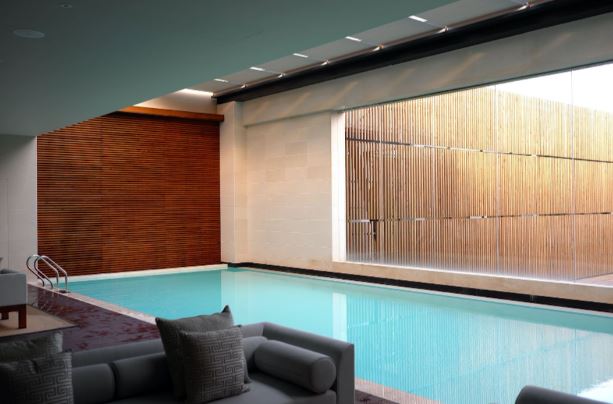This article was submitted to FMLink by Inyouths LED Mirrors.
Imagine entering a hotel room and feeling as if you’re in the middle of a forest. Consider taking a relaxing bath in a tub filled with eucalyptus-scented water. Consider sitting on your balcony and eating breakfast while overlooking a garden. All of this is possible with a sustainable hotel renovation. To make your hotel more environmentally friendly, you don’t have to sacrifice luxury or comfort. In fact, sustainable renovation can improve both of these factors.

In this article, we’ll look at how sustainable renovation can help your hotel or business stand out from the crowd. We’ll also look at some of the advantages that green renovations provide for both guests and staff.
What exactly is sustainable renovation?
The practice of renovating a building in a way that reduces its ecological footprint is known as sustainable renovation. This can be accomplished through a variety of means, including the use of recycled materials, the installation of energy-efficient lighting and appliances, and the use of green construction methods.
When done properly, sustainable renovation can not only reduce a building’s environmental impact but also save money on energy costs. The goal is to create an environmentally friendly, cost-effective and visually appealing space.
Assessing your hotel for sustainable renovations
The first step in any sustainable renovation project is to assess your hotel for potential upgrades. There are many considerations to make when assessing a property for sustainability: from the building’s layout and energy usage, to the materials used in construction and the water consumption of the property as a whole. By taking stock of your hotel’s operations and considering all of the ways in which you could make it more environmentally friendly, you can start to develop a roadmap for your renovation project.
It’s important to remember that sustainability is not just about making “green” choices. In order to be truly sustainable, a renovation project must consider the entire life cycle of the building and its impact on the environment. From the initial design phase through to demolition and recycling, every step of the process must be considered.
Ways to make your hotel more eco-friendly
There are numerous ways to make your hotel environmentally friendly. You can begin by using sustainable materials in your renovation. Switching to bamboo flooring or low-VOC paint, for example, can help reduce the environmental impact of your renovation; you can also use reclaimed materials in your construction. Making these small changes can have a significant impact on your hotel’s sustainability.
And don’t overlook the minor details; you can reduce the amount of waste produced by your hotel by using recyclable materials and compostable serviceware. You can also encourage your guests to reuse towels and sheets and to conserve energy while staying at the hotel.
Every small change adds up, and together, they can make a big impact on the environment.
Design ideas for sustainable space solutions
When designing a sustainable renovation project, it is critical to consider the surrounding environment. The hotel’s environmental impact will be reduced by using local materials and renewable energy sources.
For example, you could make your furniture and fixtures out of recycled materials from demolished buildings. Consider installing a rainwater collection system to use for toilet flushing, laundry, and cooling or heating systems. Solar panels could also be used to increase energy efficiency.
Modernizing your lighting and heating systems, adding energy-efficient hotel LED mirrors and low-flow plumbing fixtures can help reduce energy costs while increasing customer satisfaction.
Furthermore, you can repurpose existing spaces in an eco-friendly way. Converting guest rooms into meeting spaces or public gathering areas, for example, will help you save money and reduce waste. You can also choose to use reclaimed wood for floors, walls, and ceilings as an alternative to traditional building materials.
These design solutions will not only save money but also help create a beautiful and sustainable space that your guests will enjoy.
Eco-friendly materials for sustainable renovation
Sustainable renovation starts with the materials you’re using; some great options include bamboo, cork, recycled glass, and salvaged wood.
- Bamboo is one of the most eco-friendly materials out there, and it’s perfect for the construction of furniture, walls and floors.
- Cork is another excellent choice that offers great insulation properties while also being incredibly resilient.
- Recycled glass can be a great option, too! Not only is it often more affordable than new glass panels, but it’s also much better for the environment since manufacturing new glass generally requires a ton of energy.
- Finally, consider salvaged wood. Reclaimed wood pieces can add character to your hotel space while also helping you reduce your carbon footprint!
Making sustainable renovations to a hotel can boost your profits and help you save money in the long run. That’s right — turning your hotel green can actually be a great financial decision.
Conclusion
A green hotel is sure to attract eco-conscious travelers who will be eager to stay in an environmentally responsible establishment. So why not take the opportunity to show off your sustainability efforts and set yourself apart from your competition?




